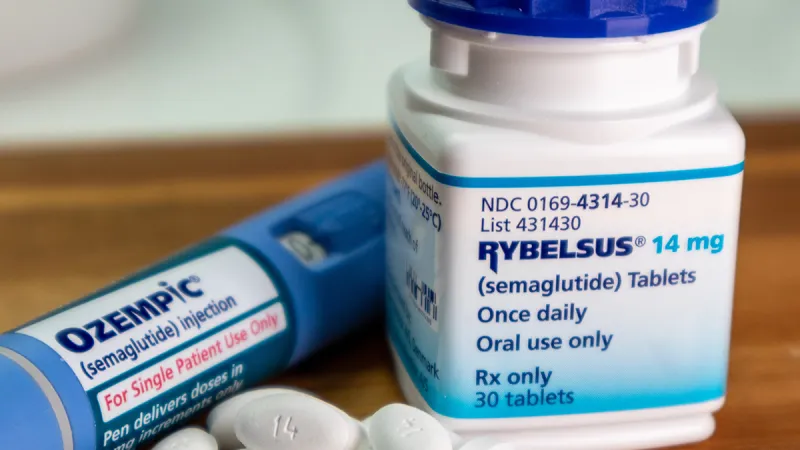Both Rybelsus and Ozempic contain the same active ingredient, semaglutide, but they come in different forms and are used differently. Here’s a breakdown of their differences:
Rybelsus
- Form: Oral tablet
- Administration: Taken by mouth once daily.
- Onset: Requires a specific routine: take on an empty stomach with water, and wait at least 30 minutes before eating or drinking anything else.
- Use: Primarily for managing type 2 diabetes; it’s convenient for those who prefer not to use injections.
Ozempic
- Form: Injection
- Administration: Injected subcutaneously (under the skin) once a week.
- Onset: Provides a steady, long-term effect with weekly doses.
- Use: Also for managing type 2 diabetes, but it’s beneficial for those who are comfortable with weekly injections and want a longer-acting medication.

Key Differences:
- Administration: Rybelsus is a daily oral tablet, while Ozempic is a weekly injection.
- Convenience: Rybelsus might be more convenient for those averse to needles, whereas Ozempic suits those who prefer less frequent dosing.
- Efficacy and Side Effects: Both are effective for blood sugar control and weight management, but individual experiences with side effects and effectiveness may vary.
Ultimately, the choice between Rybelsus and Ozempic will depend on personal preferences, medical history, and how well you tolerate each form of the medication. Your healthcare provider can help you decide which option might be best for your needs.
What is the price for these meds?
The price for Rybelsus and Ozempic can vary based on factors like your location, insurance coverage, and the pharmacy you use. As of 2024, here’s a general idea of their costs in the United States:
Rybelsus
- Price: Typically around $800 to $1,000 for a 30-day supply of the oral tablets (7 mg or 14 mg).
Ozempic
- Price: Generally around $900 to $1,200 for a 30-day supply of the injectable pen (0.25 mg, 0.5 mg, or 1 mg).
Factors Affecting Price:
- Insurance: Coverage can significantly reduce out-of-pocket costs. Check with your insurance provider to see if these medications are covered and what your co-pay might be.
- Discount Programs: Both medications often have manufacturer discount programs or patient assistance programs that might help lower costs.
- Pharmacy: Prices can vary between different pharmacies, so it’s worth comparing costs or checking with discount cards.
It’s a good idea to talk to your healthcare provider and pharmacist about potential cost-saving options, especially if you’re concerned about the price. They might be able to provide more specific information or assistance based on your individual situation.

